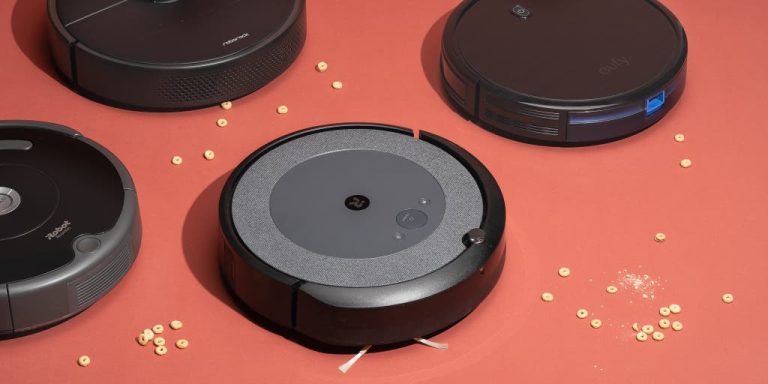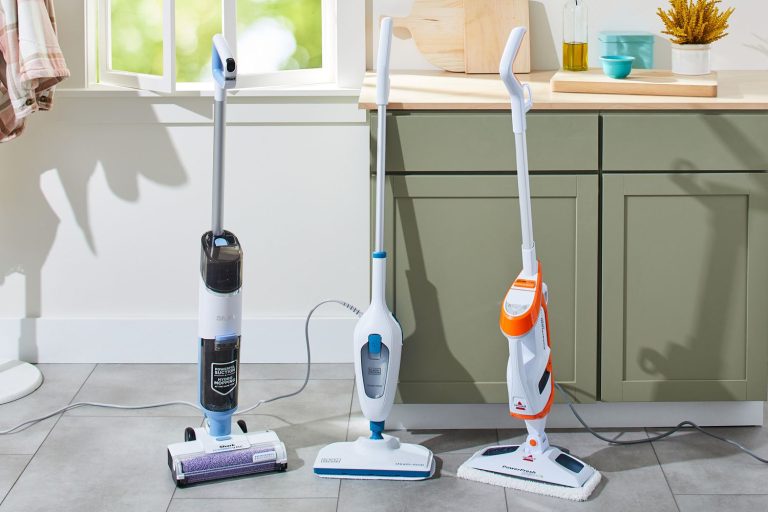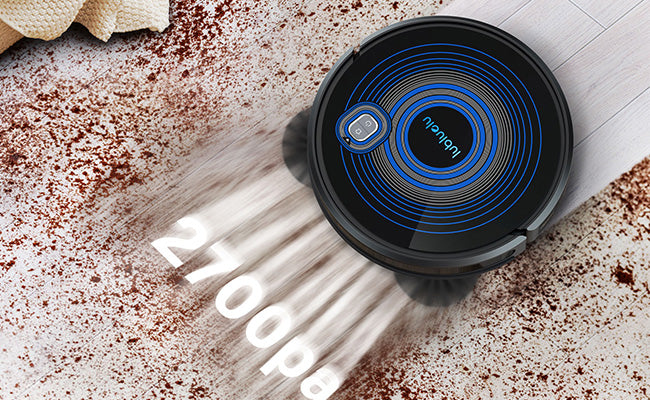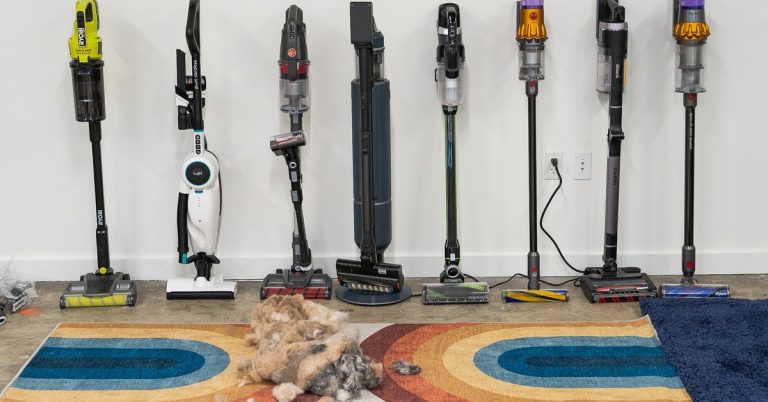What Robot Vacuums Have Mapping?
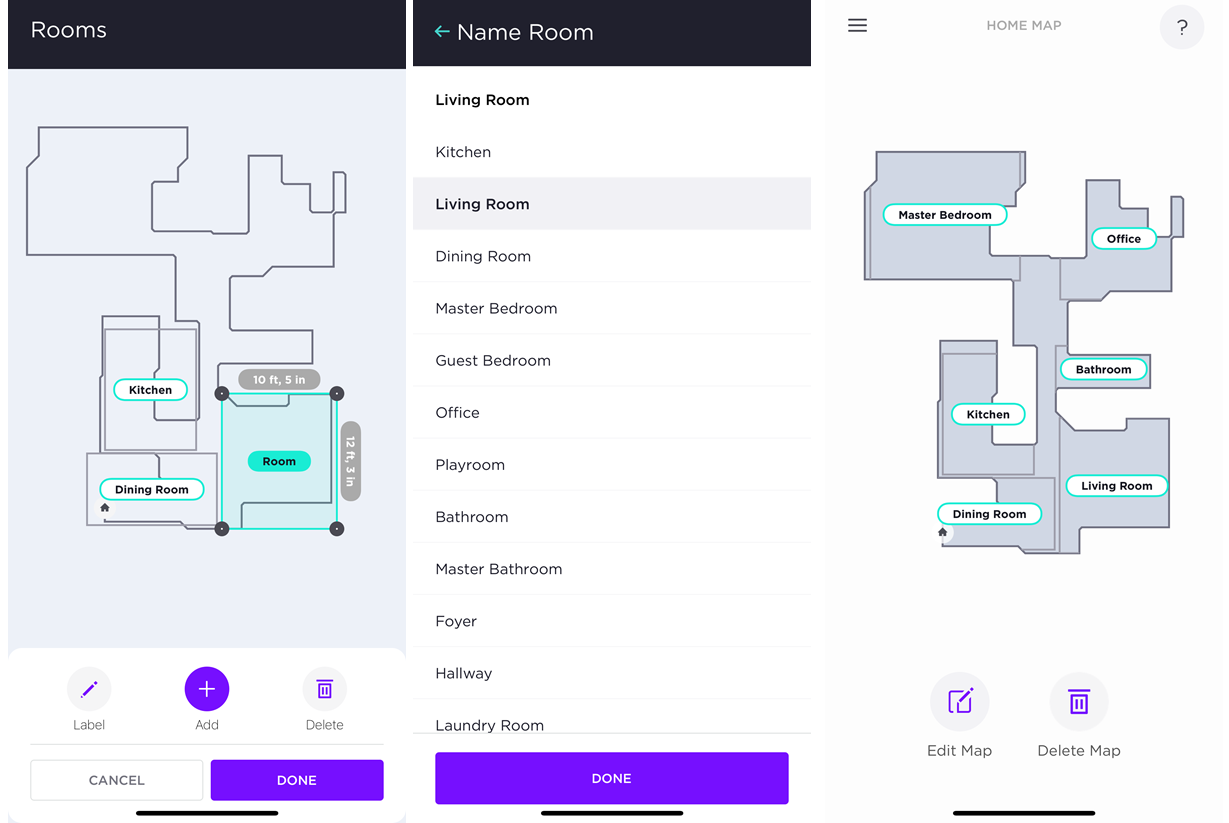
Robot vacuums with mapping technology include models from iRobot, Neato, and Eufy. These devices use sensors to navigate and clean efficiently.
Robot vacuums with advanced mapping capabilities have revolutionized household cleaning by bringing convenience and smart technology into everyday chores. These innovative devices employ sensors, lasers, or cameras to create a detailed map of your home, ensuring thorough and efficient coverage.
By charting out the space, these vacuums avoid obstacles, manage cleaning paths, and can often be controlled through smartphone apps, making them an indispensable tool for the modern homeowner. As smart homes become the norm, having a robot vacuum with mapping technology at your command means one less task on your to-do list and a consistently tidy home. The ability to schedule cleanings, designate no-go zones, and even integrate with home assistants adds layers of functionality that make these gadgets not only time-savers but also smart investments for tech-savvy consumers.
Introduction To Robot Vacuums With Mapping Technology
The modern home is becoming smarter and more efficient thanks to breakthroughs in technology. Among the most impressive advancements in domestic convenience is the integration of mapping technology in robot vacuums. These sophisticated devices not only clean your floors but also remember the layout of your space, ensuring an immaculate home with minimal human intervention. Let’s explore how robot vacuums with mapping capabilities are transforming the cleaning routine into a seamless, high-tech affair.
Defining Robot Vacuum Mapping
Robot vacuum mapping is a groundbreaking feature that allows these smart devices to navigate and memorize the layout of your living environment. Utilizing various sensors, cameras, or lasers, robot vacuums with this technology can create a virtual map of the space, recognize obstacles, and plan efficient cleaning paths. This intelligence means the vacuums can clean systematically rather than randomly, covering the entire area without missing spots or repeating areas unnecessarily.
The Evolution Of Mapping In Robot Vacuums
The journey from basic automated cleaners to today’s highly-intelligent robot vacuums reveals significant technological evolution. Initial models relied on simple algorithms and bump sensors, often resulting in random patterns of movement. With time, the introduction of more sophisticated sensors and SLAM (Simultaneous Localization and Mapping) technology transformed these devices. They now boast real-time processing, obstacle avoidance, and methodical navigation. Some models even allow users to view and interact with the map via an app, setting virtual boundaries or targeting specific areas for cleaning.
Benefits Of Mapping For Efficient Cleaning
- Maximized Coverage: With advanced mapping, robot vacuums ensure no corner is left uncleaned, providing thorough coverage.
- Time Efficiency: Optimized cleaning paths reduce the time required to clean, thus enhancing productivity.
- Customizable Cleaning: Users can often set no-go zones or direct the vacuum to specific areas that need more attention.
- Consistency: Once a robot vacuum learns the layout of your home, it consistently cleans with precision, reducing the need for manual touch-ups.
Overall, robot vacuums equipped with mapping technology represent an ideal fusion of convenience and technology, bringing hassle-free cleaning to the forefront of smart home management.

Credit: community.home-assistant.io
How Robot Vacuums Use Mapping Software
Robot vacuums are becoming increasingly smarter, and one pivotal reason for their enhanced efficiency is their use of advanced mapping software. These intelligent devices employ sophisticated technology to navigate and adapt to the unique layout of your home. In this exploration of robot vacuum mapping capabilities, we’ll delve into the specific ways these devices chart their courses, the technology at their core, and how they use algorithms to optimize cleaning routines.
Understanding The Technology Behind Mapping
The navigation system in robot vacuums takes a methodical approach to cleaning. Rather than moving randomly, these vacuums create an intricate map of your space. Through a combination of sensors and software, they can pinpoint their location and identify obstacles, ensuring a thorough and efficient cleaning cycle.
With the integration of cameras, LiDAR (Light Detection and Ranging), and other sensory technologies, these smart devices can generate and use detailed floor plans of your rooms. This means that they can navigate around furniture, avoid stairs, and remember the specific layout for future cleaning sessions, getting smarter with every use.
Different Types Of Sensors Used For Mapping
Robot vacuums host a suite of sensors that contribute to the mapping prowess of these devices. Here are some of the primary sensors used:
- LiDAR Sensors – Emit laser beams to measure distances and map room layouts with precision.
- Optical Sensors – Use cameras to observe the environment, aiding in navigation and space recognition.
- Bump Sensors – Detect obstacles by physical contact, preventing collisions.
- Cliff Sensors – Ensure the robot doesn’t tumble down stairs or ledges by detecting drops.
- Wheel Sensors – Track the distance traveled to support accurate positioning.
Each type of sensor plays a vital role in the mapping process, working in tandem to create a comprehensive understanding of the space to be cleaned.
Software Algorithms: How Vacuums Learn And Remember Layouts
As essential as hardware is, the true intelligence of a robot vacuum lies in its software algorithms. These algorithms interpret the data collected by the sensors to create a virtual map of the area. Furthermore, they enable the vacuum to learn from its environment and remember the layout for more efficient future cleanings. Essentially, robot vacuums ‘learn‘ over time, optimizing their cleaning paths to avoid obstacles and cover every accessible surface.
Simultaneous Localization and Mapping (SLAM) is one such algorithm that is often employed. SLAM allows the vacuum to simultaneously map the area and track its location within that map. Other algorithms may include path planning and machine learning techniques, enabling the devices to figure out the most efficient cleaning routes and to remember where they’ve already cleaned.
Comparing Robot Vacuums: Mapping Capabilities Across Brands
Embarking on a quest to keep your floors immaculate with minimal effort, leads to the world of robot vacuums, where their brains are as impressive as their brawn. With a myriad of options on the market, it’s paramount to understand the varied mapping capabilities offered by different brands. Comparing these robot vacuums on their ability to navigate and remember your home’s layout is essential in determining which smart appliance will best suit your needs.
Market Leaders In Robot Vacuum Mapping
When it comes to advanced mapping technology, specific brands lead the pack. Market leaders such as iRobot’s Roomba and Roborock have revolutionized the way robot vacuums interpret and adapt to the environment. These vacuums feature sophisticated sensors, laser-guided systems, and intricate algorithms that allow them to create detailed maps of your home, avoid obstacles with precision, and systematically clean each room.
- iRobot Roomba S9+: Featuring vSLAM® technology to actively capture thousands of precise measurements each millisecond.
- Roborock S6 MaxV: Utilizes LiDAR navigation and ReactiveAI obstacle recognition to effectively clean and navigate.
- Neato D7: Boasts LaserSmart mapping and navigation technology with the ability to remember multiple floor plans.
Budget-friendly Options With Basic Mapping Features
For those conscious of spending, budget-friendly robot vacuums offer basic mapping features to get the job done. These models may not have the bells and whistles of the premium options but still provide a level of automated cleaning that is a leap forward from manual efforts. Brands like Eufy and Ecovacs strike a balance between efficiency and affordability.
| Model | Brand | Mapping Technology |
|---|---|---|
| Eufy RoboVac 11S | Eufy | Basic path tracking |
| Ecovacs DEEBOT N79S | Ecovacs | Smart Motion guided auto-clean |
| ILIFE A4s | ILIFE | Randomized path navigation |
How Mapping Affects The Pricing Of Robot Vacuums
The sophistication of mapping technologies significantly influences the pricing spectrum of robot vacuums. High-end models with intricate mapping capabilities typically command a higher price due to the incorporation of cutting-edge technologies like Laser Distance Sensors (LDS), vSLAM, and AI-driven navigation. Conversely, models equipped with more rudimentary mapping features are kinder to your wallet. Consider the cleaning efficiency and level of convenience needed when assessing the value these mapping technologies bring to your household.
- Laser and Smart Navigation – Higher cost but highly efficient and precise.
- Basic Navigation – More affordable with satisfactory cleaning paths for smaller spaces.
Critical Features And Functions Of Mapping In Robot Vacuums
The integration of mapping technology in robot vacuums marks a significant leap towards smarter, more efficient home cleaning. This feature enables these smart devices to navigate and adapt to the intricacies of your living space with remarkable precision. With the ability to memorize and interpret the layout of your rooms, furniture placement, and potential obstacles, mapping plays a pivotal role in transforming your robotic companion into a truly autonomous cleaning solution. Let’s delve into the critical features and functions of mapping in robot vacuums and explore some of the key benefits they offer.
Real-time Mapping And Its Advantages
Real-time mapping technology in robot vacuums offers a dynamic cleaning experience with several advantages:
- Adaptive Navigation: By continuously updating the map of your home, robot vacuums can instantly recognize and adapt to changes in the environment.
- Efficient Cleaning Paths: With real-time awareness of the space, vacuums optimize cleaning routes to save time and battery life.
- Immediate Feedback: Users can track the vacuum’s progress and view which areas have been cleaned, enhancing the sense of control and satisfaction.
Multi-floor Mapping For Homes With Several Stories
Robot vacuums that feature multi-floor mapping capabilities take the hassle out of maintaining a multi-level home:
| Feature | Benefit |
|---|---|
| Storage of Multiple Floor Plans | Seamless cleaning on different levels without resetting the map for each floor. |
| Automatic Floor Recognition | No manual switching required; the vacuum identifies the corresponding map as it moves between floors. |
Zone Cleaning And Virtual Barriers: Enhanced Control For Users
Mapping technology not only aids in efficient cleaning but also grants users unprecedented control over the cleaning process:
- Zone Cleaning: Direct your vacuum to focus on specific areas or rooms that need extra attention, ensuring a tailored clean.
- Virtual Barriers: Use the accompanying app to set virtual no-go zones to prevent the vacuum from entering certain areas.
These features ensure that your robot vacuum cleans only where you want it to, protecting valuable items and pet areas from being disturbed.
The User Experience: Interacting With A Mapping Robot Vacuum
Modern living demands modern solutions, and robot vacuums with mapping technology are the epitome of an intelligent and convenient clean. Engaging with a mapping robot vacuum transcends the typical user experience. It’s not just about coming home to clean floors—these devices offer a level of interaction and personalization that turns a mundane chore into a high-tech indulgence.
Setting Up And Configuring Your Robot Vacuum’s Map
Embarking on the mapping journey is like giving your robot vacuum a pair of intelligent eyes. Kickstart with an initial clean, where your device embarks on an exploratory mission to understand the layout of your domain.
- Initial Setup: Place your robot vacuum in the charging dock and ensure it has a full charge before the first use.
- First Run: Let the vacuum roam freely to create a precise map of the space.
- Editing the Map: After the initial map is created, use your vacuum’s app to label rooms, set no-go zones, and customize cleaning areas.
Using Smartphone Apps To Monitor And Direct Cleaning
The pairing of robot vacuums with smartphone applications elevates user control to new heights. With your mobile device, you can command your robotic companion from anywhere at any time.
- Real-Time Tracking: Watch in awe as your vacuum navigates through your home, marking its progress on the map.
- Custom Commands: Select specific rooms for cleaning or set schedules directly through the app.
- Insights and Reports: Review cleaning summaries, including duration and coverage, to optimize future cleaning sessions.
Maintenance And Troubleshooting Mapping Issues
Maintaining the accuracy of your robot vacuum’s map is crucial for ensuring a seamless cleaning experience. Issues may arise, but timely troubleshooting can resolve them swiftly.
| Issue | Maintenance Tips | Troubleshooting Steps |
|---|---|---|
| Map Inaccuracy | Regularly clean sensors and cameras. | Re-map your home to refresh the vacuum’s memory. |
| Navigation Problems | Remove obstacles that may cause confusion. | Reset the vacuum to clear any software glitches. |

Credit: www.pcmag.com
Pros And Cons: Is A Mapping Robot Vacuum Right For You?
Pros and Cons: Is a Mapping Robot Vacuum Right for You?
As smart home technology continues to evolve, robot vacuums now include sophisticated features such as mapping capabilities. These mapping functions enable the device to memorize and optimize cleaning routes around your home. Understanding the pros and cons of mapping robot vacuums is critical before deciding if this tech advancement fits your lifestyle and cleaning needs. Here, we’ll guide you through the advantages and potential drawbacks.
The Increased Convenience Of Map-based Navigation
Robot vacuums with mapping create detailed maps of your living space to ensure thorough and efficient cleaning. The benefits of this feature include:
- No-Go Zones: You can create virtual barriers in the vacuum’s app to prevent the robot from entering specific areas.
- Selective Cleaning: Map-based vacuums often let you select particular rooms for cleaning, right from your smartphone.
- Systematic Cleaning: Map-based navigation helps in avoiding random patterns, resulting in quicker and more consistent cleaning sessions.
- Save Time: With an optimized path, these vacuums don’t waste time re-cleaning the same spots, directly contributing to the battery efficiency.
Potential Privacy Concerns With Mapping Data
While map-based robot vacuums offer convenience, they do collect data about your home’s layout. This information might be stored or processed, leading to direct implications for your privacy:
- Data Breaches: If the manufacturer’s security isn’t top-notch, hackers could potentially access your home’s layout.
- Sharing with Third Parties: Some companies may share mapping data with third parties for various reasons, whether it’s for improving services or targeted advertising.
- Storage Concerns: There may be questions about how long and where this data is stored, and if it’s properly encrypted.
Cost-benefit Analysis: When To Invest In A Mapping Robot Vacuum
Consider your specific needs to determine if the additional expense of a mapping robot vacuum is justified:
| Cost Factors | Benefits |
|---|---|
| Higher Price Tag | Improved efficiency and customizable cleaning. |
| Maintenance Costs | Advanced sensors and software that may require updates or repairs. |
| Feature Utility | Only invest if your living space complexity demands advanced navigation. |
| Long-term Savings | Reduced cleaning time and energy could lead to savings on electricity bills. |
Evaluate your home—considering size, complexity, and privacy concerns—against the robot’s capabilities to make an informed decision. For those seeking cutting-edge technology and the ultimate in convenience, investing in a mapping robot vacuum may be a wise choice.
The Future Of Robot Vacuums With Mapping Capabilities
As we advance further into the 21st century, the smart home revolution is picking up pace, and at the heart of it lies the evolution of robot vacuums with mapping capabilities. No longer are robot vacuums simple dust busters that wander aimlessly – they have become intelligent companions, equipped with sophisticated sensors and software that allow them to map out our living spaces with incredible precision. We are on the verge of seeing these devices transform the way we maintain our homes, guided by innovations that seem to blur the line between science fiction and reality.
Emerging Technologies And Innovations In Mapping
Robot vacuums are rapidly adopting emerging technologies designed to enhance their mapping capabilities. Lidar sensors, once the domain of high-end models, are becoming widespread. These sensors emit laser beams to measure distances and create accurate room maps. Meanwhile, Simultaneous Localization and Mapping (SLAM) algorithms empower vacuums to navigate and map environments in real-time, constantly updating and refining their internal maps. Machine learning and artificial intelligence are also coming into play, allowing vacuums to recognize objects, avoid obstacles more effectively, and optimize cleaning paths.
Integration With Smart Home Systems
Integration with smart home ecosystems is another area where robot vacuums are excelling. Many modern vacuums now link seamlessly with smartphones and voice assistants like Amazon Alexa and Google Assistant, enabling users to initiate cleaning sessions, set schedules, and view maps of their home’s layout from anywhere. The interoperability extends to other smart devices, facilitating scenarios where your vacuum can start a cleaning session the moment you leave the house, thanks to geo-fencing features tied to your smartphone’s location.
Predictions For Next-generation Mapping Features
Looking ahead, the next generation of robot vacuums is poised to offer even more advanced mapping features. We are likely to see breakthroughs in 3D mapping, which will not only chart the floor plan but also include the positioning of furniture and other elements in three dimensions. This would enable vacuums to clean more efficiently and avoid contact with delicate items. Upcoming models could also feature adaptive learning patterns, where the vacuum remembers previous cleaning sessions and adjusts its route for maximal efficiency based on past performance.

Credit: www.ecovacs.com
Frequently Asked Questions On What Robot Vacuums Have Mapping
Which Robot Vacuum Has Mapping?
Robot vacuums with mapping capabilities include the iRobot Roomba i7+, Neato Botvac D7, and the Eufy RoboVac L70 Hybrid. These models utilize advanced sensors to create and navigate home floor plans.
Do I Need A Robot Vacuum With Mapping?
A robot vacuum with mapping is not mandatory but enhances cleaning efficiency and navigation, especially in large or complex spaces. It ensures thorough coverage and saves time.
Do Any Eufy Vacuums Have Mapping?
Yes, certain Eufy vacuum models feature advanced mapping technology, allowing for efficient navigation and cleaning of your home.
Conclusion
Embracing the convenience of robot vacuums with mapping technology transforms your cleaning routine. Brands like Roomba, Neato, and Eufy offer models that efficiently navigate and memorize your home’s layout. For a spotless, hassle-free environment, consider these savvy cleaning companions. Their precision and smart design promise a dust-free, mapped-out future for home maintenance.
